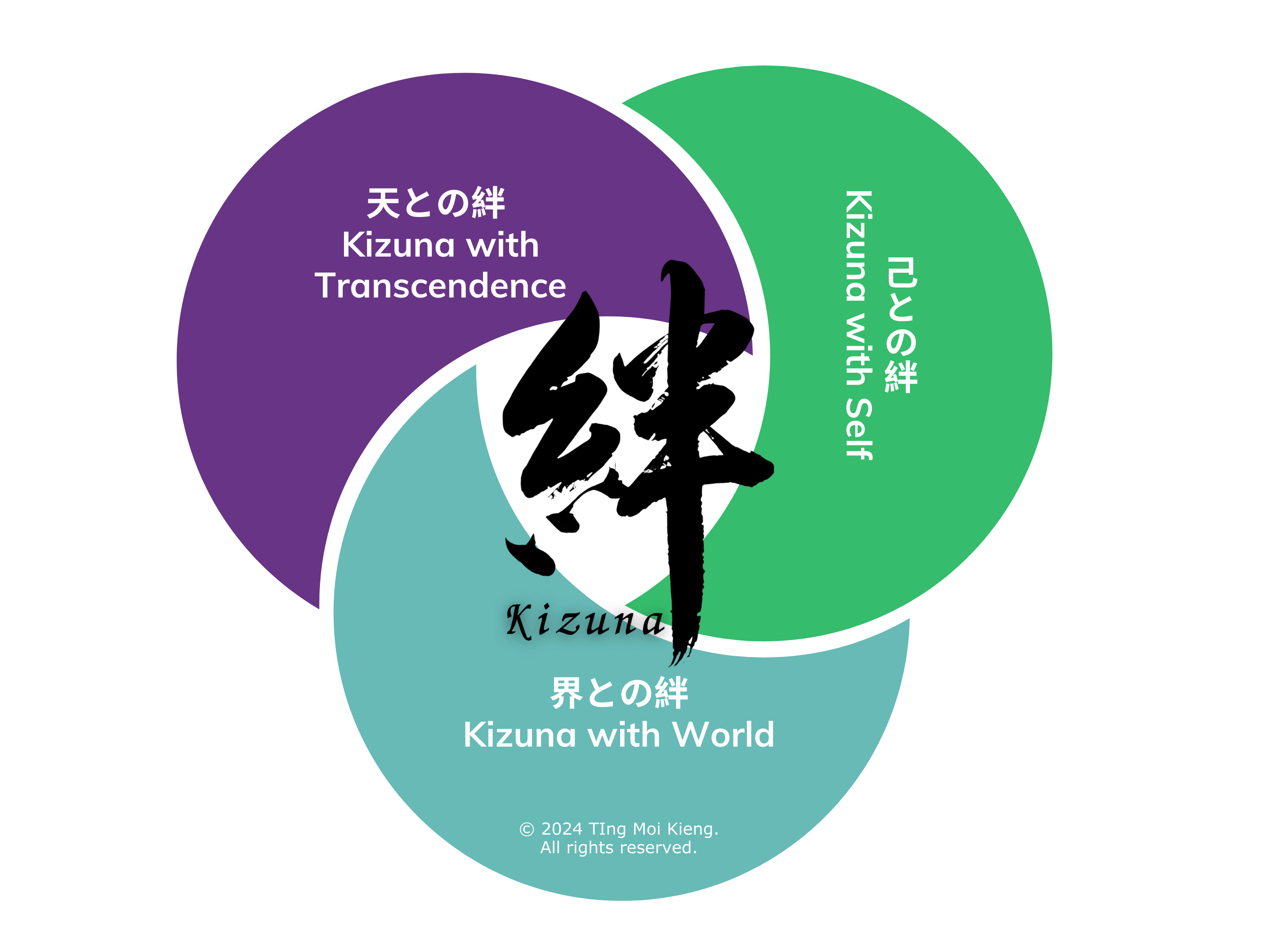The Two Faces of a Bond
The word Kizuna holds a powerful duality. While celebrated as a symbol of unity and support, its root kanji can also mean hodashi (fetters), suggesting social pressure and constraint. This section allows you to compare these contested interpretations. Click on a bar to learn more.
A Framework for Connection
To understand Kizuna holistically, we explore it through three interconnected pillars. Each represents a fundamental dimension of our bonds. Select a pillar to begin your exploration.
己との絆
Kizuna with Self
This first pillar represents a modern reinterpretation of Kizuna, arguing that authentic external connections must begin with a strong inner foundation. It's the process of self-realization, acceptance, and inner harmony. Explore the philosophical concepts below that help cultivate this essential bond.
界との絆
Kizuna with World
This pillar addresses Kizuna in its most recognized form: the web of connections binding us to communities, society, and the globe. It's the horizontal dimension of our bonds, but also the most contested, shifting between organic social harmony and a tool of political pressure.
天との絆
Kizuna with Transcendence
The most abstract pillar elevates connection beyond the human realm. It suggests our bonds are anchored in a relationship with a reality larger than ourselves—be it nature, the cosmos, or the divine. This vertical bond provides ultimate meaning and resilience.
The Virtuous Cycle of Connection
The three pillars are not isolated; they form a dynamic, integrated system. A strong bond with Self enables authentic connection with the World, and both are sustained by a bond with Transcendence. This creates a powerful, self-reinforcing cycle for personal and organizational growth.
